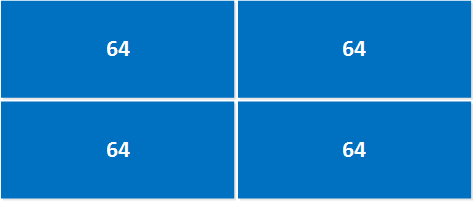
In previous subnetting lessons here and here all our subnets had a “fixed size”. Each subnet had the same size. For example we took a class C network 192.168.1.0 and divided it 4 blocks:


Is this really an efficient way of creating subnets? Let’s say I would have the following requirements:
I have 4 subnets so it’s no problem, but I’m still wasting a lot of IP addresses. If we use a block of 64 for our subnet where I only need 2 IP addresses I’m throwing 62 IP addresses away.
Now you might think why we could care about this because we are using a private network address (192.168.1.0) and we have plenty of space. This is true, but what about the Internet? We don’t want to throw away valuable public IP addresses.
Let’s say I want to subnet my 192.168.1.0 network in the most efficient way, let’s take another look at the requirements I just showed you:
What kind of subnets would we need to fit in these hosts? Let’s see:
Let’s create the subnets. We take our block of “256”:

And chop it into the blocks we just specified:

We just saved ourselves some valuable IP addresses, now the next thing to do is answer the following questions:
When using VLSM, make sure you start with the biggest subnet first or you will have overlapping address space.
Let’s answer these questions. We’ll start with the network addresses:
Now we can fill in the broadcast addresses:
Because we have different subnet sizes, we need to calculate the subnet mask for each subnet. To find the subnet mask you can use this trick:
256 – subnet size = subnet mask
The only thing left to do is fill in the usable host IP addresses:
Here we go, we just subnetted our 192.168.1.0 /24 by using VLSM.
Let’s try another example but this time we use a Class B 172.16.0.0 network with different requirements:
To solve this question first we need to determine the “block” that we require: